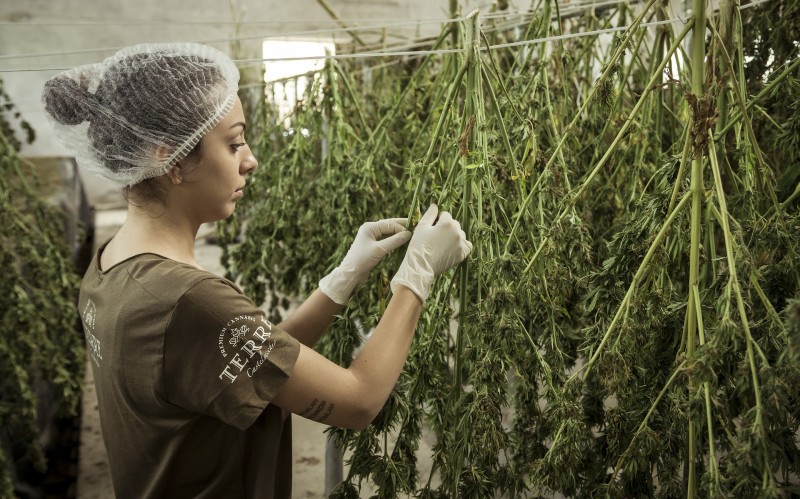The coronavirus pandemic has no doubt thrown a massive wrench into business-as-usual for the cannabis industry. While the overall cannabis economy remains relatively strong, some cultivators are struggling far more than others to stay afloat during this crisis. And it’s becoming clear that those faring best have one thing in common: automation.
COVID-19 and Cannabis Cultivation: The New Reality
Automation’s metamorphosis from a luxury to a necessity is happening all across the economy.
From recycling companies to grocery stores and even customer service providers, a broad swath of businesses are coming to the rapid realization that harnessing automation technologies may be the only way to maintain operations during this public health crisis, where working in close proximity to other humans is dangerous and potentially unlawful.
Automation and digitization are receiving renewed interest up and down the supply chain, even among manufacturers that had previously been slow to adapt. The cannabis cultivation sector is no different.
Even in normal times, automated cultivation management systems are a significant value add. But during the coronavirus pandemic, these systems are proving absolutely essential.
Contingency Plans for a Pandemic
As social distancing mandates designed to slow the spread of COVID-19 disrupt the temporary labor workforce that so many cultivators have come to rely on, automated monitoring and control systems are emerging as a reliable way to manage cultivation facilities with just a skeleton crew of salaried employees.
Systems with 24/7 monitoring and data reports of your lighting, carbon dioxide, soil moisture, and other biologic and environmental metrics provide better, timelier, more actionable information than any hand-logging system can.
Having that level of information immediately available to every team member who needs it, regardless of whether or not they are on site, is one key benefit of automation.
But today’s automated systems go well beyond monitoring. Comprehensive automated systems empower facility managers to control and adjust their irrigation systems, lighting, temperature and other environmental controls remotely.
Some advanced systems even give cultivators the ability to monitor and adjust key facility controls through an app on their mobile phone or tablet.
The ability to operate your facility remotely, with just a few essential workers on site, is a make-or-break factor right now—and for the foreseeable future.
Cultivators must simultaneously reduce the number of people working onsite at their grow facilities, while also ensuring the health and safety of those essential workers by providing them with ample space for social distancing on the job.
Automated cultivation systems are more or less the only way to maintain operations during a labor disruption like this.
Cannabis Cultivation Beyond COVID-1
Even when the economy isn’t experiencing record levels of instability, growers with automated cultivation systems in place are leaps and bounds ahead of their hand-operated counterparts. Cannabis is steadily moving in the direction of commodity crop status. And a quick glance at widely-used growing methods in the traditional agricultural sector shows that cost-cutting through automation is ubiquitous and essential.
The up-front costs of implementing an automated system are not insignificant. But the natural evolution towards automation is easy to understand when one considers just how much these systems can reduce overhead costs in the long run.
From irrigation systems to lighting schedules, nutrient dispersal to harvesting, automated systems equate to lower payroll costs, increased efficiencies, elimination of waste, accumulation of actionable data and highly standardized final products.
And that last point is an important one.
As the legal market matures, consumers are increasingly seeking out reliable products and consistent experiences. You may or may not like Budweiser beer or Starbucks coffee, but you know exactly what you’re getting when you buy it. Automation establishes a tightly controlled environment capable of producing standardized products at scale.
And when it comes to automated cannabis cultivation systems, there’s another major consideration we haven’t touched on yet—regulatory compliance.
Compliance at every level of government can be a huge drain on a cultivator’s time, energy and bottom line. Automated systems—like those used for inventory tracking, data collection and reporting—can greatly reduce that friction.
Key Takeaways
One thing the COVID-19 crisis has taught us is that life is full of surprises, and you always need a backup plan in place. For cannabis cultivators working through the coronavirus pandemic, the only legitimate Plan B involves highly automated systems. Automated systems are not a panacea, but they do handle a variety of potential crisis scenarios while providing serious value even when times are good.
With the latest generation of advanced automated cultivation technology, a grower’s plants will never know the difference between a mechanical and human touch. Neither will their customers. But cultivators will certainly notice the difference that automation makes for their sustained profitability and their peace of mind—especially in times of deep uncertainty.
Author
-
Rich Cardinal is Vice President of Cannabis Operations at Next Big Crop, a full-service cannabis consulting firm with decades of collective expertise in license procurement; facility design and construction; systems engineering; equipment and materials sourcing; operations management; and compliance. Formed in 2013, Next Big Crop’s mission is to offer top-notch consulting services in an industry that, until recently, has lacked standardization and large-scale agricultural principals. In May 2015, the company was acquired by General Cannabis Corporation, a publicly traded company servicing the cannabis sector nationally.






